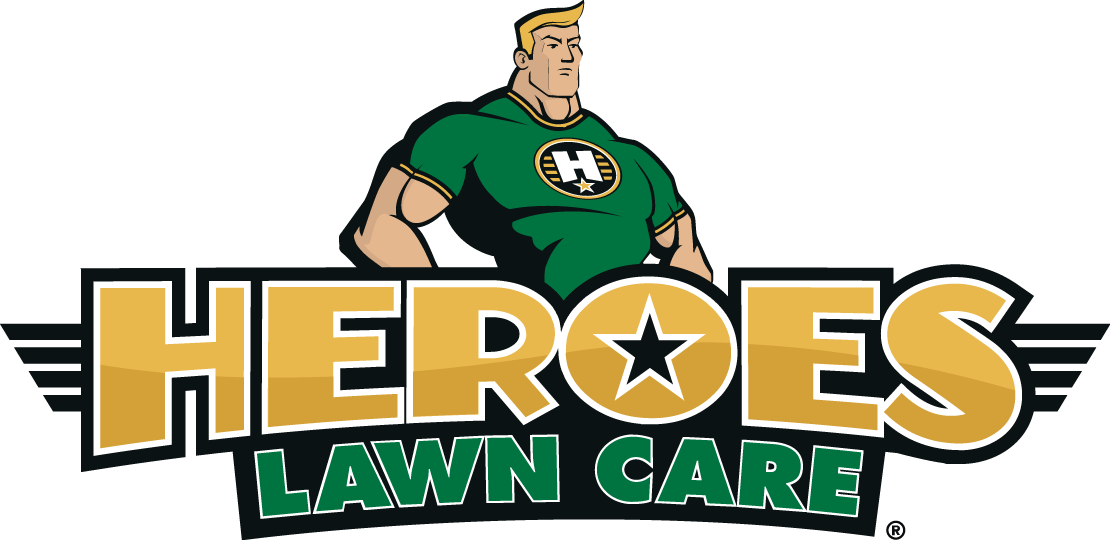Lawn Aeration Guide: Cost, Benefits, and When to Do It
Lawn aeration is an important part of lawn care and one that can often be overlooked. Aeration improves the air quality and circulation in your lawn’s soil, allowing water and nutrients to penetrate deeper into the roots. This encourages healthy grass growth, reduces weed populations, and creates a better overall appearance for your lawn.
Because many homeowners don't know what lawn aeration is, how much it costs, or if they even need to do it, this important maintenance task is often put off. This guide will answer all your questions about lawn aeration so you can make an informed decision about whether it's right for you. We'll also give you tips on when to aerate and how to save money on the entire process. Read on to learn more.
What Is Lawn Aeration
Lawn aeration involves making small holes in your lawn so that air, water, and nutrients can reach the roots of your grass. This is usually done with a machine with spikes or discs penetrating the ground. The aeration process can also be done by hand, but this is much more time-consuming and not as effective.
There are two ways to aerate your lawn. The first approach involves using a machine to pull out small soil cores from your lawn. This is the most common method and usually the most effective. The second approach, called solid tine aeration, involves using a machine with spikes to punch holes in the ground without taking away any ground. This method can be less effective because it doesn't allow for as much air and nutrient exchange. Both ways are effective, but core aeration is usually the best option.
Why Is Lawn Aeration Important
The two most pressing reasons to aerate your lawn are to improve its health and appearance. When you aerate your yard, you make small holes in the ground that allow air, water, and nutrients to reach the grassroots. This is important because it helps the roots grow stronger and healthier. Aeration also helps to break up compacted soil, which can make it difficult for your grass to grow, leading to dense dry patches and other problems.
Finally, aerating your lawn can also improve its appearance. By allowing air and nutrients to reach the roots of your grass, it will be able to grow thicker and fuller. This makes for a lush, green lawn that looks great all year round.
Benefits Of Lawn Aeration
The benefits of lawn aeration are many, but the biggest one is that it helps your lawn to better absorb water and nutrients. This is because aeration creates tiny holes in the soil that allow water and fertilizer to penetrate down to the roots of your grass. Lawn aeration also decreases compaction, which can happen when too much weight is placed on an area of grass, such as from heavy foot traffic. Soil compaction makes it difficult for roots to grow, resulting in a more sensitive, less-healthy lawn.
Aeration can also help to remove thatch buildup. Thatch is dead grass, roots, and other organic matter accumulated on your lawn over time. A thick thatch layer can prevent water and nutrients from reaching the soil and provide a perfect environment for pests and diseases to thrive. Finally, lawn aeration simply makes your lawn look better. After aeration, your grass will be greener and healthier looking, with a more robust root system.
Cost
The cost of lawn aeration depends on several factors like the size of your lawn, as well as the type of service you choose. For example, if you have a small lawn, you may be able to do it yourself with a hand-held aerator. These can be rented from most hardware stores for around $40 per day. However, the cost will be higher if you have a larger lawn or want a professional to do it. Here are other factors that influence the price:
- Size of lawn: The cost of lawn aeration typically increases with the size of your lawn. This is because it takes more time to aerate a larger lawn.
- Type of service: If you choose to have a professional do it, the cost will be higher than if you do it yourself. However, professionals typically have the right equipment to do the job quickly and efficiently.
- Type of aerator: The type of aerator used also affects the cost. Hand-held aerators are typically less expensive than walk-behind models.
- The number of passes: The number of passes made by the aerator also affects the cost. Typically, more passes will be required for a larger lawn.
- Obstacles: If your lawn has a lot of obstacles, such as trees or garden beds, it will take longer to aerate, and the cost will be higher.
- Prep work: The cost will be higher if the lawn needs to be prepped before aeration, such as by mowing or raking.
How To Know If Your Lawn Needs Aeration
It's simple enough to determine if your lawn needs aeration. Just look for these three telltale signs:
- Your lawn is compacted - If you can't seem to get your lawn mower through the grass, or if you see footprints remaining behind after someone walks across your lawn, it's likely that the soil is too compacted for healthy grass growth.
- Your grass is thinning - If you notice that your once-lush lawn is now looking sparse, it may be time to aerate. This is especially true if the thinning occurs in high-traffic areas of your lawn.
- Your grass isn't growing as quickly as it used to - A healthy lawn should bounce back quickly after being walked on or mowed. If you notice that your grass is taking longer to recover, it may be a sign that the roots aren't getting the oxygen they need.
When To Do It
The right time for lawn aeration is different for every lawn, but there are a few general rules you can follow:
- Aerate your lawn in the fall or spring when the grass is actively growing. This will help the new roots take hold and establish themselves more easily.
- If your lawn is heavily used, such as by kids or pets, you may need to aerate it more often.
- If your soil is compacted, you should aerate it at least once a year.
How To Aerate Your Lawn
The process of lawn aeration means perforating the soil to allow water, nutrients, and air to penetrate the grass roots. This provides a boost to the lawn, encouraging new growth and a healthier lawn overall.
If you're doing it yourself, it's best to start by renting an aerator from your local hardware store or garden center. If you have a small lawn, you can also purchase a hand-held aerator. Once you have your aerator, simply go over your entire lawn, making sure to overlap each pass by about half. For best results, try to do this when the ground is moist but not soggy.
If you have professionals over to do it for you, there's not much you have to do. Just make sure you're clear on how much they'll be charging and when they'll be coming. Most lawn care professionals will do a great job and leave your lawn looking healthy and green in no time.
Prep Work
Pre-aeration is often overlooked, but it's actually one of the most important steps in the entire aeration process. If you don't prep your lawn properly, the aeration won't be as effective and could even do more harm than good.
The first step is to make sure that your lawn is mowed at the proper height. If your grass is too long, the cores will be pulled up instead of being pushed down into the soil. This can damage the crowns of your grass plants and leave your lawn vulnerable to disease. On the other hand, if your grass is too short, the aeration process won't be as effective because the cores won't be able to penetrate the soil deeply enough.
The second step is to rake up any dead leaves or other debris that might be on your lawn. This will help to ensure that the cores can penetrate the soil evenly and won't get caught on anything. Finally, you'll want to water your lawn a few hours before you aerate. This will help to soften the soil and make it easier for the cores to penetrate. However, you don't want to water too close to the time of aeration because your lawn will be more susceptible to compaction if the soil is too wet.
Lawn Aeration Tips
Lawn aeration is crucial if you want to have healthy grass, but the process can sometimes be a bit overwhelming. Here are some tips to help you through it:
- Concentrated lawns might need more than one pass to ensure all areas are covered.
- You don't have to clean up the soil plugs because the machine will deposit them on your lawn. Some people like mowing them into the lawn, while others just leave them to eventually break down after several watering and mowing sessions.
- If you want to , it's best to aerate your lawn first.
- Avoid sand if you want to topdress with anything else other than leftover soil plugs. The sand will interfere with water and cause the ground to harden, so aeration won't have any effect.
- You can apply an organic soil amendment mixture in a light coat.




